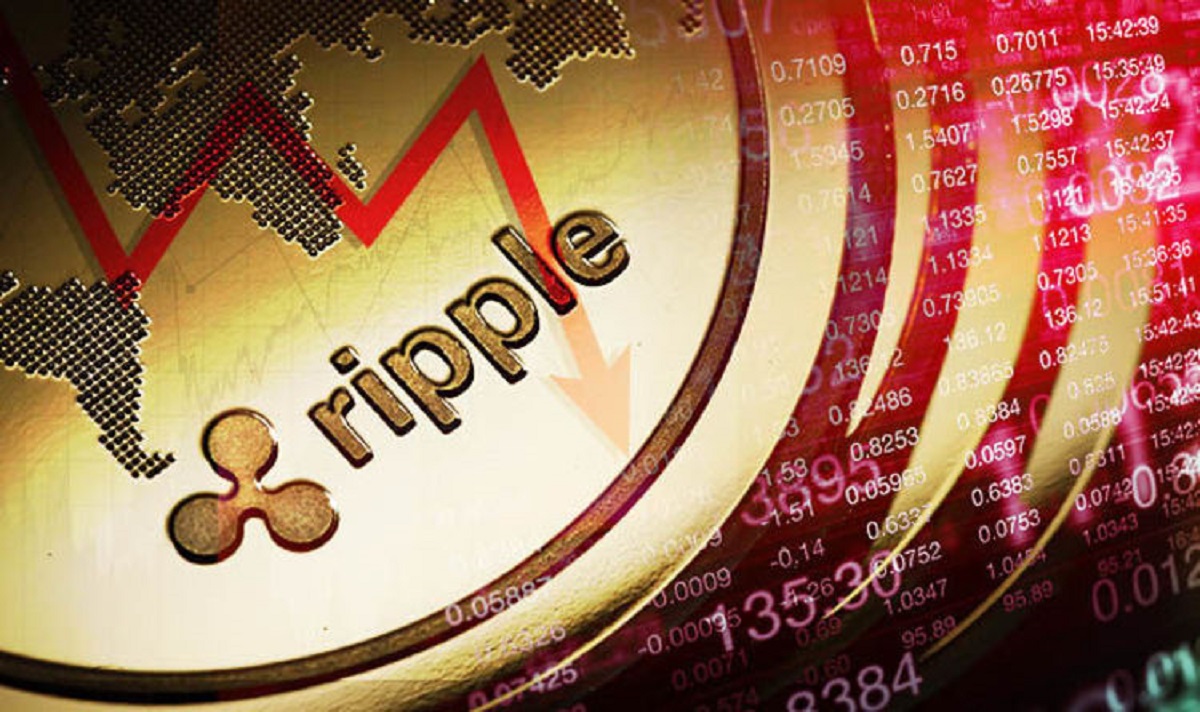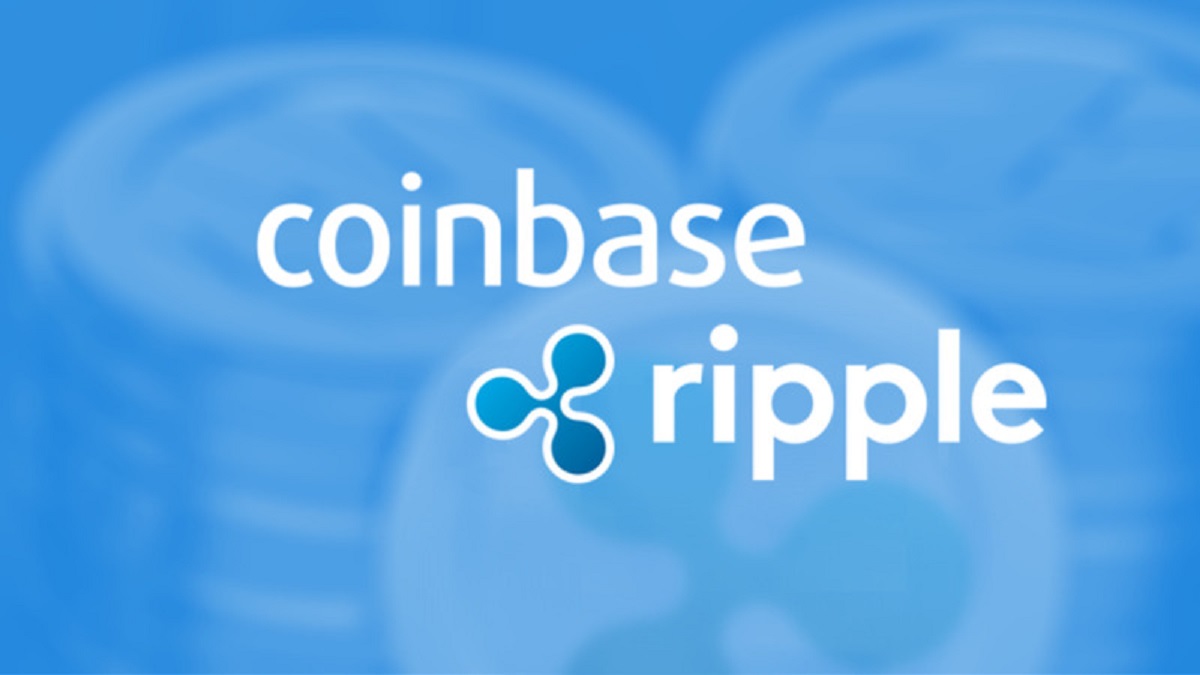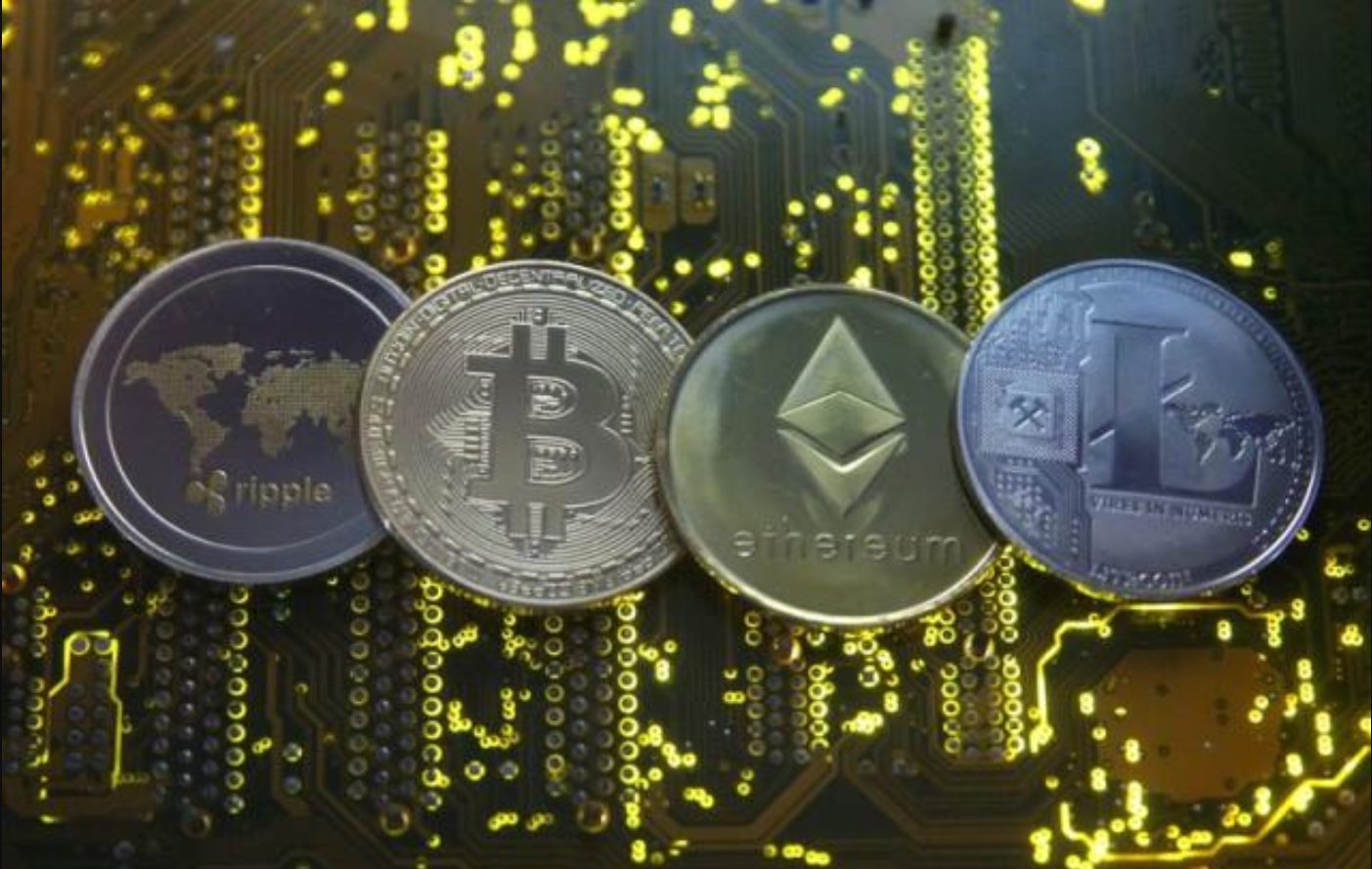Introduction
Welcome to the world of cryptocurrencies, where digital currencies are revolutionizing the way we conduct financial transactions. One such cryptocurrency that has been making waves in the industry is Ripple. With its unique technology and vision, Ripple aims to transform the way cross-border payments are executed, promising faster, cheaper, and more efficient transactions.
Ripple, also known as XRP, was created in 2012 by a team of talented developers. Unlike other cryptocurrencies like Bitcoin or Ethereum, Ripple has a distinct focus on facilitating real-time gross settlement systems, currency exchange, and remittances. Its primary goal is to enable fast and secure international money transfers, eliminating the need for outdated and inefficient banking intermediaries.
By utilizing a decentralized, open-source blockchain technology, Ripple enables the seamless transfer of value across borders. Its unique consensus protocol, known as the Ripple Protocol Consensus Algorithm (RPCA), allows for secure and instant transactions on its network.
The popularity of Ripple has grown rapidly over the years, attracting the attention of financial institutions and investors alike. Ripple’s partnership with major banks and payment providers, including Santander and American Express, has further bolstered its reputation and potential for mass adoption.
However, despite its promising features and partnerships, the price of Ripple has experienced fluctuations in recent times. This article aims to explore the various market factors that may be influencing Ripple’s price movements, shedding light on the reasons behind its recent downturn.
What is Ripple?
Ripple is a digital payment protocol and cryptocurrency that allows for fast, low-cost, and secure transactions. It was created by Ripple Labs Inc., a technology company that aims to revolutionize the way money is moved across borders.
At its core, Ripple is both a digital currency, referred to as XRP, and an open-source payment protocol that enables the seamless transfer of money in any form, including traditional fiat currencies and other digital assets. Unlike traditional banking systems, Ripple does not rely on a central authority to process and validate transactions. Instead, it utilizes a consensus algorithm to validate and confirm transactions instantaneously.
One of the key features that sets Ripple apart from other cryptocurrencies is its focus on facilitating international remittances and cross-border transactions. Traditional banking systems can often be slow, expensive, and prone to errors, making them less than ideal for global transfers. Ripple aims to address these issues by offering a more efficient and cost-effective solution.
Ripple’s payment protocol enhances the speed and reliability of cross-border transactions by utilizing a network of validators, known as “gateways,” which can include banks, financial institutions, and other trusted entities. These validators confirm and validate transactions, ensuring the integrity of the Ripple network.
Furthermore, Ripple’s technology allows for the issuance and transfer of any type of currency, be it fiat or digital. This functionality makes Ripple an appealing choice for financial institutions and banks looking to improve their cross-border payment systems.
As a cryptocurrency, XRP can be used as a medium of exchange for goods and services or as a store of value. With a finite supply of 100 billion XRP, it is designed to maintain its value and serve as a bridge currency for facilitating transactions in multiple currencies.
In summary, Ripple is not just a cryptocurrency but a comprehensive payment protocol that aims to revolutionize cross-border transactions. With its focus on speed, cost-efficiency, and security, Ripple has the potential to disrupt traditional banking systems and reshape the global financial landscape.
Market Factors Influencing Ripple’s Price
The price of Ripple, like other cryptocurrencies, is influenced by a variety of market factors. Understanding these factors can provide insight into the fluctuating price movements of Ripple. Here are some key market factors that have an impact on Ripple’s price:
- Overall Cryptocurrency Market Sentiment: The sentiment and investor confidence in the broader cryptocurrency market can significantly influence the price of Ripple. When the market experiences a bullish trend, investors are more likely to invest in cryptocurrencies, including Ripple, which can drive its price higher through increased demand.
- Bitcoin’s Influence: Bitcoin, being the largest and most recognized cryptocurrency, has a strong impact on the entire cryptocurrency market, including Ripple. When Bitcoin experiences significant price movements, it tends to cause a ripple effect (pun intended) throughout the market, potentially impacting the price of Ripple as well.
- Market Liquidity: The liquidity of Ripple plays a crucial role in its price stability. Higher liquidity allows for easier buying and selling of Ripple, which can help maintain a more stable price. Conversely, lower liquidity can result in greater price volatility, as even relatively small buy or sell orders can have a significant impact on the price.
- News and Announcements: News related to Ripple, such as partnerships, regulatory developments, or technological advancements, can greatly impact its price. Positive news can create optimism among investors, leading to increased buying pressure and a rise in price. Conversely, negative or concerning news can trigger selling pressure and cause the price to decline.
- Regulatory Developments: As the cryptocurrency industry continues to evolve, regulatory developments and government interventions can impact Ripple’s price. For instance, regulatory actions that restrict or ban the use of cryptocurrencies can create uncertainty and negatively affect Ripple’s price. On the other hand, favorable regulatory frameworks and increased adoption by governments can boost investor confidence and drive up the price.
- Competition from Other Cryptocurrencies: Ripple faces competition from numerous other digital currencies with similar functionalities. The presence of strong competitors in the market can affect investor sentiment and influence the demand for Ripple, potentially impacting its price. Factors such as technological advancements, partnerships, and market adoption of rival cryptocurrencies can sway investor interest and subsequently impact Ripple’s price.
These are just a few examples of the market factors that can influence the price of Ripple. It is important to note that the cryptocurrency market can be highly volatile, and prices can experience significant fluctuations in short periods. Therefore, it is essential for investors to stay informed about market trends, news, and factors affecting Ripple’s price in order to make well-informed investment decisions.
Regulatory Concerns
Regulatory concerns are one of the significant factors that can influence the price of Ripple. As the cryptocurrency industry grows and attracts more attention from governments and regulatory bodies, Ripple, like other cryptocurrencies, faces various regulatory challenges that can impact its value. Here are some key regulatory concerns affecting Ripple:
- Lack of Clarity: One of the primary concerns for Ripple and the broader cryptocurrency industry is the lack of regulatory clarity. Many countries have yet to establish clear guidelines or regulations specifically addressing cryptocurrencies, leading to uncertainty among investors and businesses. Without clear regulations, Ripple may face challenges in gaining widespread adoption and potential regulatory obstacles that could limit its growth.
- Regulatory Restrictions: Some countries have implemented strict regulations or outright bans on cryptocurrencies. These restrictions include limitations on cryptocurrency exchanges, restrictions on initial coin offerings (ICOs), or stringent Know Your Customer (KYC) and Anti-Money Laundering (AML) requirements. Regulatory actions of this nature can have a negative impact on Ripple’s price by reducing its accessibility and hindering adoption.
- Concerns Over Money Laundering and Illicit Activities: Cryptocurrencies, including Ripple, have faced criticism for being potentially used for money laundering and illicit activities due to their pseudonymous nature. Regulatory bodies are concerned about the potential misuse of cryptocurrencies, which can lead to increased scrutiny and regulations. Such concerns can create negative sentiment towards Ripple, impacting its price.
- SEC Lawsuits: Ripple has been involved in an ongoing legal battle with the U.S. Securities and Exchange Commission (SEC). The SEC lawsuit alleges that Ripple’s XRP token is an unregistered security, raising concerns about potential regulatory implications. The outcome of this lawsuit could have significant consequences for Ripple, including potential fines, restrictions, or even delisting from exchanges, which can greatly impact its price.
- International Regulations: Ripple’s focus on facilitating cross-border transactions requires compliance with regulations in multiple jurisdictions. Varying and sometimes conflicting regulations among different countries can pose challenges for Ripple’s global adoption. Changes in international regulations or restrictions imposed by important markets can impact the demand and value of Ripple.
It is important to note that regulatory concerns are an inherent risk in the cryptocurrency industry as it undergoes regulatory evolution. Ripple, along with other cryptocurrencies, must navigate these concerns to gain wider acceptance and maintain its value.
Competition from Other Cryptocurrencies
Ripple faces significant competition from a myriad of other cryptocurrencies that offer similar functionalities and value propositions. The presence of strong competitors in the cryptocurrency market can impact Ripple’s price, as investor sentiment may shift based on the relative strengths and market adoption of rival cryptocurrencies. Here are some key factors related to competition that influence Ripple:
- Technological Advancements: Cryptocurrencies constantly evolve and improve their technological infrastructure to provide better features and services. Technological advancements in areas such as scalability, transaction speed, security, and interoperability can give competing cryptocurrencies an edge over Ripple. Investors who perceive these advancements as superior may shift their focus and investments to other cryptocurrencies, which can impact Ripple’s price.
- Partnerships and Strategic Alliances: Collaboration with established companies, financial institutions, and other industry players can significantly impact the market position of cryptocurrencies. Partnerships can enhance the adoption and usage of rival cryptocurrencies, positioning them as preferred alternatives to Ripple. High-profile partnerships and strategic alliances can generate positive sentiment and instill confidence in competing cryptocurrencies, potentially affecting Ripple’s price.
- Market Adoption: The rate of acceptance and adoption of a cryptocurrency can heavily influence its price. A widespread adoption indicates trust and confidence from businesses, merchants, and consumers. Rival cryptocurrencies that gain significant market traction and usage may divert the attention and investment away from Ripple, impacting its demand and price. Factors contributing to market adoption include ease of use, popular applications, and merchant acceptance.
- Investor Sentiment: Investor sentiment is driven by a combination of factors, including perceived project quality, team reputation, market performance, and community support. Rival cryptocurrencies that garner positive sentiment and strong community engagement may attract investors away from Ripple, causing a potential decline in demand and subsequent impact on Ripple’s price.
- Regulatory Compliance: Cryptocurrencies that demonstrate a clear commitment to regulatory compliance may be seen as more trustworthy and secure investment options. Compliance with regulations, such as KYC/AML requirements, can provide a competitive advantage over cryptocurrencies that struggle with regulatory issues. Competitors with better regulatory compliance may attract investors, potentially affecting Ripple’s price.
These factors underscore the importance of closely monitoring the competitive landscape in the cryptocurrency industry. As new cryptocurrencies emerge and existing ones evolve, the market dynamics can shift, impacting the demand and value of Ripple.
Ripple’s Ongoing Legal Battle
Ripple finds itself embroiled in an ongoing legal battle with the U.S. Securities and Exchange Commission (SEC), which has significant implications for the cryptocurrency and its price. The legal dispute centers around whether Ripple’s XRP token, the native digital asset of the Ripple network, should be classified as a security under U.S. securities laws. Here are the key aspects of Ripple’s legal battle and how it affects the cryptocurrency:
- SEC Allegations: The SEC alleges that Ripple conducted an unregistered securities offering when it sold XRP to investors. The SEC argues that XRP, being a digital asset, should be considered a security, subject to registration requirements and regulations. This allegation has raised concerns among investors, as a negative outcome for Ripple in the legal battle could result in substantial fines and regulatory restrictions that may impact its market value.
- Market Uncertainty: Ripple’s legal battle has cast uncertainty over the status and future of XRP. This uncertainty has the potential to negatively impact investor sentiment and market confidence in the cryptocurrency. Investors may be hesitant to buy or hold XRP until the legal issues are resolved, leading to a possible decrease in demand and subsequent price fluctuations.
- Exchange Delistings: As a result of the SEC lawsuit, several major cryptocurrency exchanges, including Coinbase and Binance US, halted trading of XRP or delisted it from their platforms. These actions further eroded investor confidence in Ripple and affected its liquidity. Reduced availability on popular exchanges can make it more challenging for investors to buy or sell XRP, potentially leading to price volatility.
- Legal Precedence: Ripple’s legal battle with the SEC is closely watched by the cryptocurrency industry, as the outcome could set a significant legal precedent for the classification of other digital assets. If the court deems XRP as a security, it may have implications for how other cryptocurrencies are regulated and traded. The legal precedent set by this case may impact investor sentiment not only towards Ripple but the broader cryptocurrency market as well.
- Company Evolution: The outcome of the legal battle could also impact Ripple Labs Inc., the company behind Ripple. Regulatory penalties or restrictions imposed on Ripple could hinder its ability to further develop and promote the Ripple network and its associated technologies. Any negative impact on Ripple’s development could affect the cryptocurrency’s long-term prospects and pricing.
It is important to note that the legal battle between Ripple and the SEC is ongoing, and the ultimate impact on Ripple’s price is uncertain. The resolution of the lawsuit, coupled with regulatory clarity, will play a significant role in shaping Ripple’s future and restoring market confidence in the cryptocurrency.
Negative Public Perception
Ripple’s reputation has not been immune to negative public perception, which can have implications for its price and market performance. Negative sentiment can arise from various factors and can significantly impact the demand and value of Ripple. Here are some key aspects related to the negative public perception of Ripple:
- Centralization Concerns: Ripple’s relationship with banks and financial institutions has led to criticisms of centralization. Some argue that Ripple’s close associations with traditional financial institutions contradict the decentralized nature and ideals of cryptocurrencies. Centralization concerns may lead to skepticism among cryptocurrency enthusiasts and result in a negative perception of Ripple.
- Controversies and Lawsuits: Ripple has faced its share of controversies and legal challenges, such as the ongoing SEC lawsuit. These issues often attract negative attention from the media and investors. Controversial events and legal battles can create doubt, uncertainty, and negative sentiment, potentially dampening demand for Ripple and impacting its price.
- Manipulation and Market Integrity: The cryptocurrency market has been susceptible to manipulation, and Ripple is not exempt from this phenomenon. Allegations of market manipulation, whether true or not, can lead to negative public perception and erode investor confidence. Concerns about market integrity may deter potential investors from engaging with Ripple or result in existing investors divesting their holdings.
- Lack of Regulatory Clarity: The lack of clear regulations and guidelines for cryptocurrencies, including Ripple, has raised concerns among investors and the general public. The absence of regulatory clarity can amplify negative perception, as it creates uncertainty and potential risks for investors. Skepticism fueled by regulatory ambiguity can impact Ripple’s market value and hinder its widespread adoption.
- Volatility and Speculation: The inherent volatility of the cryptocurrency market can contribute to negative perception. Price fluctuations, especially significant downward movements, can create doubt and fear among investors. Additionally, the speculative nature of the market can attract negative attention, with critics arguing that cryptocurrencies, including Ripple, are driven by speculation rather than real-world utility.
It’s important to note that negative public perception does not always reflect the fundamental strengths or weaknesses of Ripple as a cryptocurrency. However, it can influence market sentiment, investor behavior, and ultimately Ripple’s price. Building trust, improving transparency, and addressing concerns can help alleviate negative perceptions and build a more positive outlook for Ripple.
Ripple’s Relationship with Banks and Financial Institutions
Ripple has established strong partnerships and collaborations with banks and financial institutions around the world. This unique relationship sets Ripple apart from many other cryptocurrencies and has both positive and negative implications for its price and market perception. Here are the key aspects of Ripple’s relationship with banks and financial institutions:
- Improved Cross-Border Payments: Ripple’s core objective is to streamline cross-border payments. Through its payment protocol and technologies, Ripple aims to provide faster, cheaper, and more efficient international money transfers compared to traditional banking systems. The partnership with banks and financial institutions allows Ripple to leverage their existing infrastructure, networks, and customer base, leading to potential improvements in the cross-border payment ecosystem.
- Increased Adoption: Collaborating with banks and financial institutions enhances Ripple’s chances of adoption on a larger scale. Banks and financial institutions are powerful gatekeepers in the financial industry and hold the potential to bring Ripple’s technology to a wider audience. The more institutions that adopt Ripple, the greater its network effect, which can drive up demand for XRP and potentially impact its price.
- Market Credibility: Ripple’s partnerships with major banks and financial institutions lend credibility to the cryptocurrency project. Financial institutions are often subject to rigorous due diligence and regulatory scrutiny. By working with banks, Ripple gains a level of validation that can improve market perception and build trust among investors. This increased credibility can positively influence Ripple’s price and overall market sentiment.
- Centralization Concerns: Ripple’s close association with banks and financial institutions has raised concerns about centralization. Some argue that Ripple’s partnerships challenge the decentralized principles of cryptocurrencies. Critics may perceive Ripple as working closely with traditional financial institutions and potentially compromising the democratic nature of the cryptocurrency ecosystem. These concerns can have a negative impact on Ripple’s reputation and result in skepticism among certain segments of the cryptocurrency community.
- Technological Adoption: Collaborating with banks and financial institutions allows Ripple to showcase its technology and demonstrate its value proposition. By integrating Ripple’s payment protocol and utilizing the XRP digital asset, banks can potentially improve their operational processes and deliver more seamless cross-border transactions to their customers. Technological adoption by financial institutions can drive long-term demand for Ripple and positively impact its price.
Ripple’s relationship with banks and financial institutions is a double-edged sword, offering opportunities for growth and adoption while also raising concerns regarding centralization. The impact of these partnerships on Ripple’s price and market perception depends on industry dynamics, regulatory developments, and the overall market sentiment towards centralized and decentralized financial systems.
Effects of News and Social Media
News and social media play a powerful role in shaping public perception and investor sentiment, and Ripple is not exempt from their influence. News articles, media coverage, and discussions on social platforms can have significant effects on Ripple’s price and market dynamics. Here are the key ways in which news and social media impact Ripple:
- Market Sentiment: Positive or negative news related to Ripple can impact investor sentiment and subsequently affect its price. Positive news, such as new partnerships or technological advancements, can create optimism and drive up demand for Ripple. Conversely, negative news, such as regulatory concerns or controversies, can generate fear and uncertainty, leading to a decrease in demand and a potential decline in Ripple’s price.
- Perception and Reputation: News and social media discussions influence the overall perception and reputation of Ripple. Positive narratives surrounding Ripple’s technology, partnerships, and potential use cases can enhance its reputation and attract investors. On the other hand, negative narratives, such as criticisms, lawsuits, or concerns about centralization, can cast doubt and erode trust in Ripple, affecting its market value.
- Market Manipulation: News and social media platforms can be leveraged to manipulate cryptocurrency markets, including Ripple. False information, rumors, or coordinated efforts to spread fear or hype can lead to price volatility and market manipulation. Traders and investors need to exercise caution and critical thinking when interpreting news and social media discussions to avoid falling victim to manipulation or making uninformed investment decisions.
- Accessibility and Awareness: News articles and social media platforms contribute heavily to the accessibility and awareness of Ripple. Positive coverage and discussions can increase the visibility of Ripple among potential investors, improve understanding of its technology and potential applications, and attract new participants to the market. This increased accessibility and awareness can potentially drive up demand and positively impact Ripple’s price.
- Timing and News Events: Ripple’s price can be influenced by the timing of news events and media coverage. Major announcements or significant developments during periods of high market activity may amplify their impact on Ripple’s price. Moreover, news events occurring during periods of low liquidity or market volatility can lead to exaggerated price movements, creating opportunities for profit or loss for traders and investors.
It is important for investors to critically evaluate news and social media information, considering the credibility of the sources and cross-referencing information. Additionally, staying informed about the latest developments and understanding the potential impact of news events on Ripple can help investors navigate the market effectively.
Ripple’s Technical Analysis
Technical analysis is a method used to evaluate the historical price and volume data of an asset, such as Ripple, to identify patterns, trends, and potential future price movements. While technical analysis does not provide a crystal ball for predicting exact price movements, it can provide insights and guidance for traders and investors. Here are some key aspects of Ripple’s technical analysis:
- Price Patterns: Technical analysis examines price patterns on charts, such as support and resistance levels, trendlines, and chart patterns like triangles, wedges, or head and shoulders. These patterns can provide indications of potential price reversals or continuations, helping traders identify entry and exit points.
- Indicators: Various technical indicators, such as moving averages, relative strength index (RSI), and stochastic oscillators, are used to analyze price data. These indicators can provide insights into overbought or oversold conditions, market momentum, and potential trend reversals, assisting traders in making informed decisions.
- Volume Analysis: Volume analysis examines the trading volume accompanying price movements. High trading volume during price increases or decreases indicates strong market interest and participation. Changes in volume can confirm or contradict the price movement, providing additional information for traders to assess the strength of a trend or potential reversals.
- Support and Resistance Levels: Support levels are price levels at which buying pressure typically exceeds selling pressure, acting as a floor to prevent further price declines. Resistance levels, on the other hand, are price levels at which selling pressure exceeds buying pressure, acting as a ceiling preventing further price increases. Identifying these levels on the Ripple chart can help traders anticipate potential price reactions and plan their trading strategies accordingly.
- Market Trends: Trend analysis examines the overall direction of price movements in the market. Identifying and following market trends can be crucial for traders and investors. An uptrend is characterized by a series of higher highs and higher lows, indicating a bullish market. Conversely, a downtrend is identified by lower highs and lower lows, signaling a bearish market.
It’s important to note that technical analysis comes with limitations and should be used alongside fundamental analysis and market sentiment considerations. Additionally, cryptocurrency markets can be highly volatile and subject to unexpected events or market manipulation, which may impact the effectiveness of technical analysis.
Conclusion
Ripple’s price is influenced by a variety of market factors, including regulatory concerns, competition from other cryptocurrencies, legal battles, public perception, and the impact of news and social media. Understanding these factors is crucial for investors and traders looking to navigate the volatility of the cryptocurrency market.
Ripple’s unique technology and partnerships with banks and financial institutions present both opportunities and challenges. While collaborations with traditional institutions enhance Ripple’s credibility and potential for adoption, they also raise concerns about centralization. The ongoing legal battle with the SEC adds an additional layer of uncertainty, with potential consequences that may impact Ripple’s market value and reputation.
Moreover, the cryptocurrency market is heavily influenced by news events and discussions on social media platforms. Positive or negative sentiment, driven by news articles or social media discussions, can significantly impact Ripple’s price and market dynamics. It is crucial for investors to critically evaluate information from these sources and consider the credibility of the news as they make trading or investment decisions.
Technical analysis can also provide insights into Ripple’s price movements by examining price patterns, indicators, volume analysis, and support/resistance levels. However, traders should be aware of the limitations of technical analysis and consider other factors like fundamental analysis and market sentiment.
In conclusion, Ripple’s price is affected by a complex interplay of market factors, regulatory landscape, partnerships, perception, news events, and technical analysis. Navigating these dynamics requires a comprehensive understanding of the cryptocurrency ecosystem and careful consideration of multiple factors influencing Ripple’s price. Staying informed, conducting thorough research, and exercising caution are essential in capitalizing on the potential opportunities while managing the risks associated with Ripple and the broader cryptocurrency market.

























